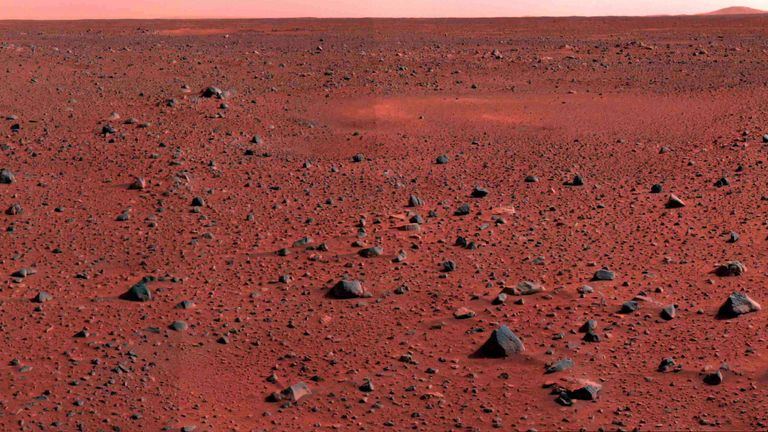Scientists think they can warm up Mars by blasting glitter into its atmosphere.
Warming up the red planet to around 28C could make it more hospitable for humans by melting ice and allowing microbial life to flourish.
One-third of Mars’ surface is water, and streams may have flowed around the planet as recently as 600,000 years ago, but at present it is too cold to be habitable.
For years, scientists have tried to work out how to heat up Mars but the proposed technologies have been expensive and hard to implement.
Now, scientists at the University of Chicago, Northwestern University in Illinois, and the University of Central Florida say they could use engineered particles made from iron and aluminium that lies on the planet’s surface to reflect light and trap escaping heat.
It’s the same process that humans have accidentally employed here on Earth; releasing material into the atmosphere to enhance Mars’ natural greenhouse effect and trap solar heat at the surface.
Instead of CO2 and methane, however, the researchers say “conductive nanorods” – “not much smaller than commercially available glitter” could do the job.
That means materials wouldn’t need to be brought to Mars, making the operation more feasible.
“For Mars, warming the planet is a necessary […] first step [to making it habitable]. Previous concepts have focused on releasing greenhouse gases, but these require large amounts of resources that are scarce on Mars,” said University of Chicago planetary scientist Edwin Kite, who helped lead the study published this week in the journal Science Advances.
Once “lifted” into the atmosphere, the Mars glitter would be much slower to settle than standard Mars dust, meaning it would stay up there for a long time, according to the study.
“You’d still need millions of tons [of ‘glitter’] to warm the planet, but that’s five thousand times less than you would need with previous proposals to globally warm Mars,” said Mr Kite. “This significantly increases the feasibility of the project.”
Astronauts still won’t be able to breathe on Mars because of the thin air so it will be a long time before humans can walk on the surface unaided.









